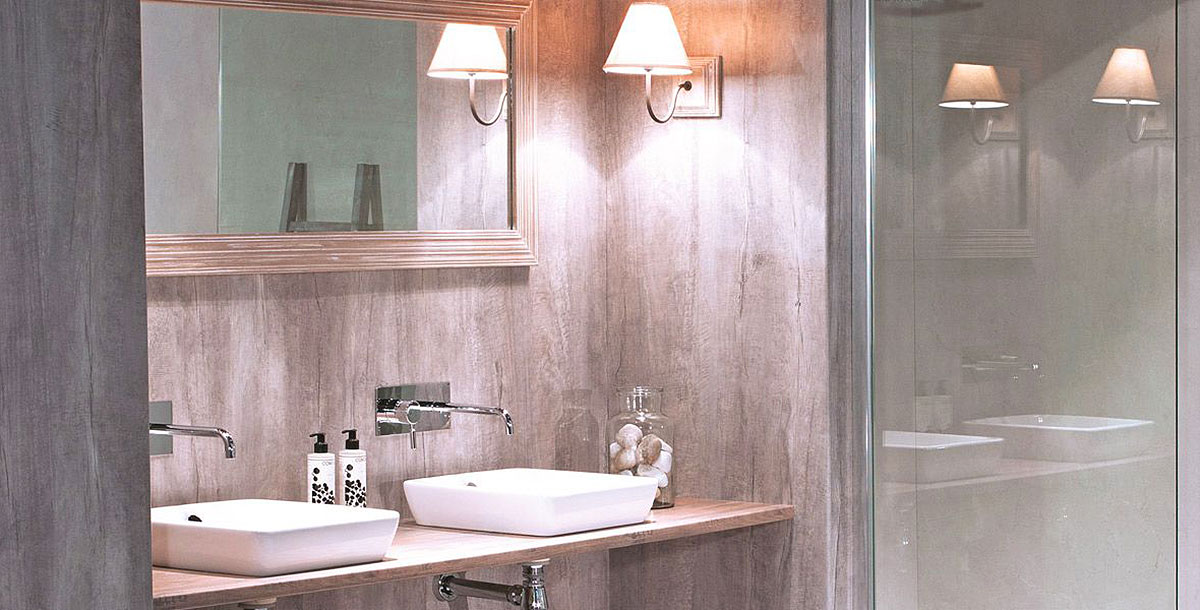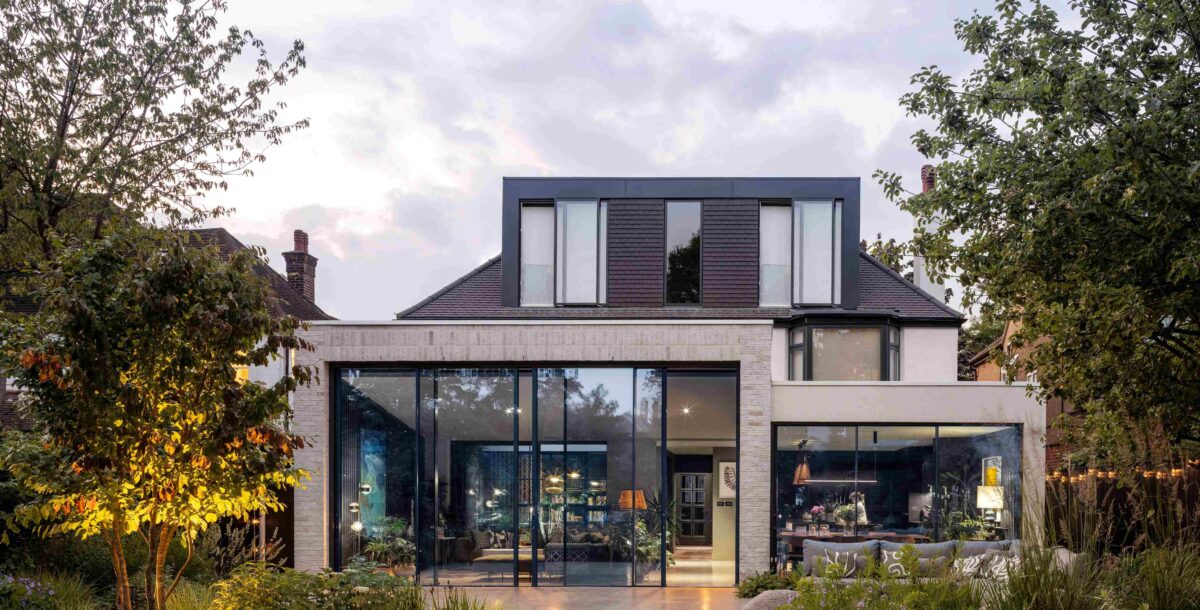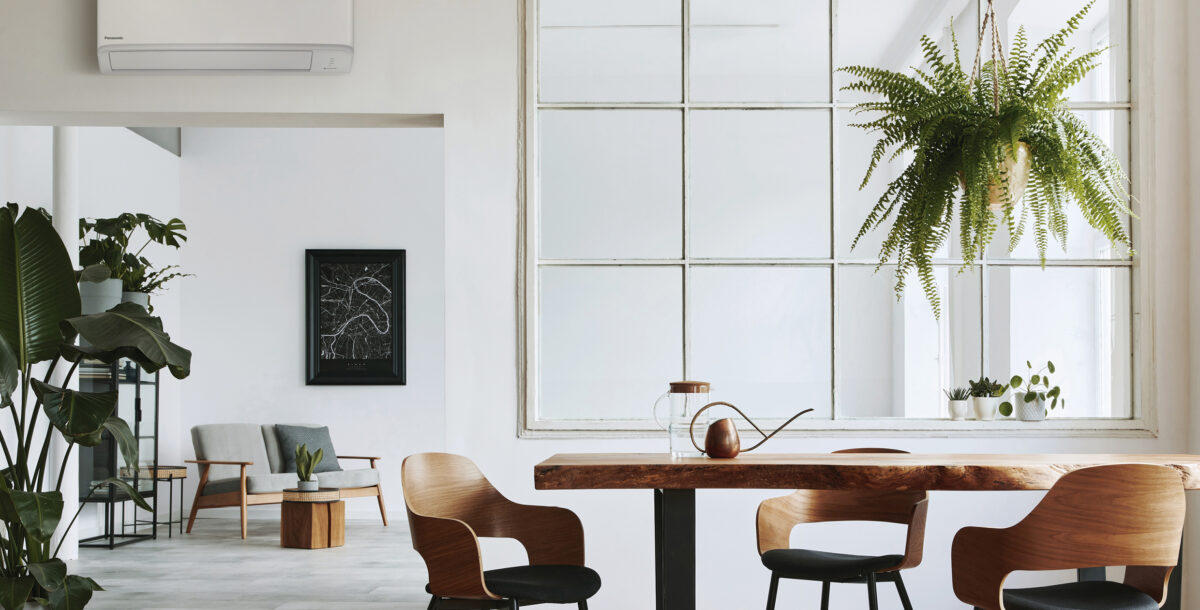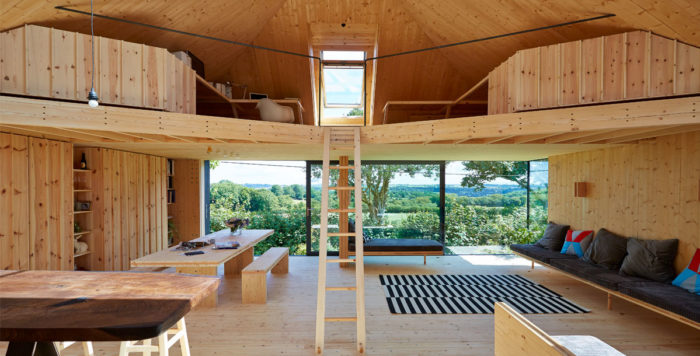Maximise your bathroom budget
Broaden your budget with expert design tips, detailed planning and smart shopping
Your bathroom might be the smallest room in the house, but it’s easy for a refurbishing budget to spiral out of control. So how do you make your bathroom renovation cost go further without compromising on style?
Affordable products, reining in additional costs and ensuring your design works hard all help to stretch a budget. Start by working out which areas are worth investing in and where you can be thrifty, as well as the finishing touches that will take your project to the next level.
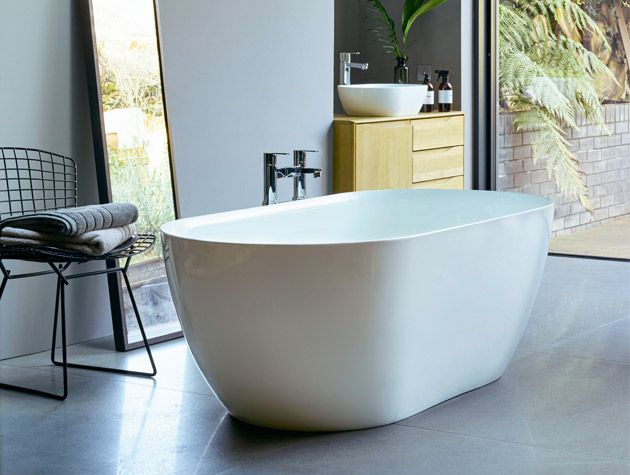
Photo: Clearwater Baths
Where to spend
Shopping online makes it feel as if there are bargains to be had, but some buys are better value than others. Most experts agree that good brassware is worth the investment, especially if replacing valves further down the line means damaging walls to access them.
‘Taps are the only true mechanical component, so durability and reliability are key,’ says Phil Etherden, managing director at The Albion Bath Company. ‘Remember that the fitting costs of expensive or bargain products will be the same, and that if you buy cheap, you buy twice.’
Spend on showers, too. They need to be able to withstand daily use, and they could save money on water and energy bills if they have eco settings or are thermostatic.
It’s also worth allocating some of your budget to storage. Buy units that are durable – essential when you consider how many times a day doors and drawers will be opened.
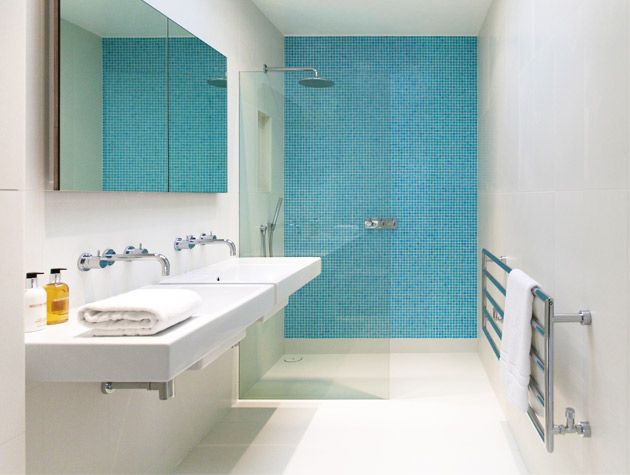
Photo: DesignWright
Where to save
Timeless white sanitaryware tends to be inexpensive, but do check its quality. ‘It’s vital to shop carefully as there are low-cost imports that will not give long service,’ says Howard Birch, director at Aston Matthews. ‘Cheap ceramicware can have bubbles and faults that result in stains or cracks, while bargain cast-iron baths may have a thin enamel finish that will chip.’
The style of sanitaryware will also affect fitting costs: although wall-hung designs look striking, they may need false walls to conceal brackets, so floor standing items can be more economical.
Mixing affordable buys with pricier elements will give your design a high-end feel. ‘If you’ve found an expensive tile that you love, try incorporating it as an accent alongside a neutral, cheaper tile to get a luxurious look,’ says James Holt, co-founder of Holt. ‘Similarly, think about how you use materials. Granite countertops come with a hefty price tag, but you can save by buying a slab with imperfections that can be hidden by your basin or taps.’
Low-profile shower trays are a way to create the style of a wet room without the cost of tanking, while framed enclosures are cheaper than frameless. If you’re including a tub, there is a wide range of good-value and sized-down acrylic baths. Available in many shapes, they are low maintenance, keep water warmer for longer and often come in design-led styles.
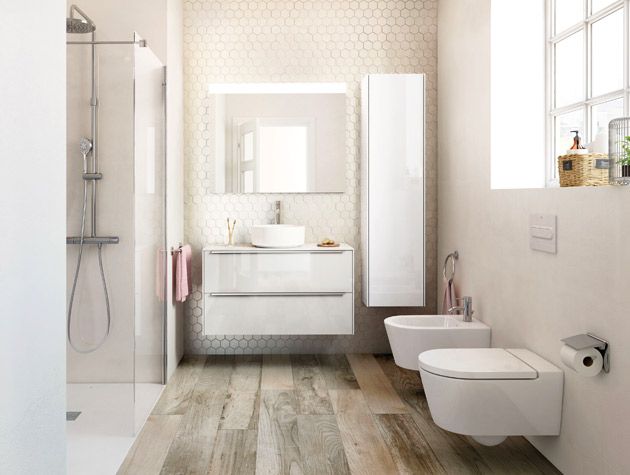
Photo: Roca
What’s new?
A wider choice of products makes creating the look you want more achievable. ‘For example, developments in the manufacture of acrylic have allowed for a more affordable alternative to cast iron, copper and tin previously used to make freestanding baths,’ says Tina Robinson, product manager at Heritage Bathrooms. ‘We can now apply a more detailed design concept, including different lacquered finishes, plus it’s a lighter material, meaning no floor reinforcement is required.’
Technologies that have previously been the preserve of high-end bathrooms are starting to filter into the middle market. These include integral lighting, Bluetooth speakers, rimless WCs, charging sockets, colour-changing LEDs, de-misting functions and digital technologies.
‘Certain digital showers come with wireless controls, which gives more flexibility on the location of the shower valve,’ says Chris Taylor, a designer at Bristan.
In high-end bathrooms, luxurious finishes such as black and rose-gold brassware and silk-matt surfaces are becoming more popular. Ultra-thin edges for basins and baths, fully flush shower surfaces and pared-back cabinetry are the newest additions to many ranges, with composites and metallic finishes allowing adventurous shapes.
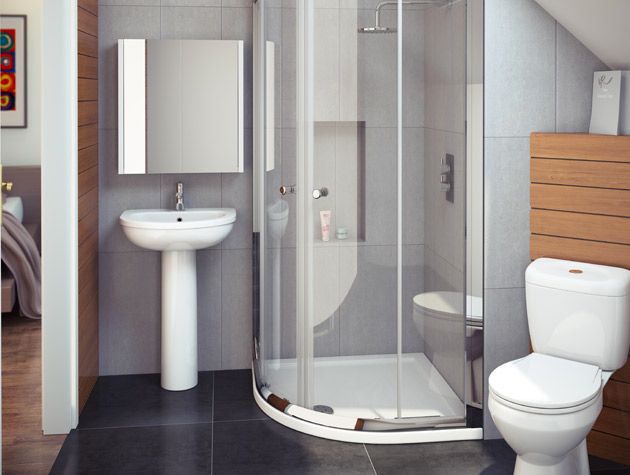
Photo: Victorian Plumbing

